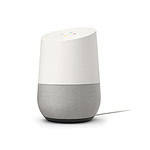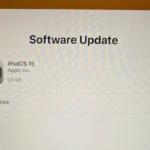Many mobile data plans have a limit of 10GB, but it might be difficult to understand what this means for you. Mobile data allows you to do things like watch videos, browse websites, and use apps on your phone. Data plans come in different sizes, so it’s important to choose one that fits your habits. For many people, 10GB of data is enough for moderate use.
With 10GB, you can browse the internet, use social media, and stream music without any problems. You can even watch occasional videos without using up all your data too quickly. However, with the new 5G technology, you might end up using more data because it’s faster and provides better experiences. This could make larger data plans more attractive.
Understanding Data Usage: A Closer Look at 10GB
A 10GB data plan is a common choice for many smartphone users. But what does 10GB of data really mean in terms of everyday activities like browsing the web, streaming music, or watching videos? Let’s break it down.
Web Browsing
Casual web browsing typically consumes very little data. You can easily browse for hours on a 10GB plan without coming close to your limit. However, if you frequently visit websites with lots of images or videos, your data usage may increase.
Sending and receiving emails, even with attachments, usually uses a negligible amount of data. A 10GB plan is more than enough for regular email use.
Social Media
Scrolling through your social media feeds can use a moderate amount of data, especially if you watch videos or view lots of images. But with a 10GB plan, you can enjoy your social media without too much worry.
Music Streaming
The amount of data used for music streaming depends on the quality of the music. Streaming at normal quality uses less data than streaming at high quality. With a 10GB plan, you can stream music for many hours at normal quality.
Video Streaming
Video streaming uses the most data out of all these activities. The amount of data used depends on the quality of the video. You’ll use more data streaming in HD than in standard definition. With a 10GB plan, you can stream a few hours of video at standard definition.
Table: Estimated Data Usage for Common Activities
| Activity | Data Usage (approximate) |
|---|---|
| Web browsing (per hour) | 50 MB |
| Email (per message) | 1 MB |
| Social media (per hour) | 100 MB |
| Music streaming (per hour) | 50 MB (normal quality) |
| Video streaming (per hour) | 1 GB (standard definition) |
Important Note
These are just estimates. Your actual data usage may vary depending on many factors. It’s always a good idea to monitor your usage to avoid exceeding your limit.
Tips for Managing Your Data Usage
- Use Wi-Fi whenever possible: Connect to Wi-Fi at home, work, or public places to avoid using your cellular data.
- Monitor your usage: Keep track of your data usage to see how much you’re using and adjust your habits if needed.
- Limit background data: Some apps use data in the background even when you’re not actively using them. You can limit this in your phone’s settings.
- Be mindful of video streaming: Video streaming uses the most data. If you’re worried about exceeding your limit, stream at a lower quality or watch videos less often.
With a little awareness and planning, you can make the most of your 10GB data plan and enjoy all your favorite online activities.
Key Takeaways
- 10GB of data supports moderate internet use, including browsing, social media, and music streaming.
- Users should match their data plans to their typical online activities to avoid overage charges.
- The impact of advancing technologies like 5G on data usage should be considered when selecting a plan.
Understanding 10GB of Data
In an age where data is key for staying connected, 10GB serves as an important gauge of usage. This section helps to unwrap what one can do with 10GB and how different activities eat up data.
What Does 10GB of Data Offer?
With 10GB of data, a user can engage in a variety of digital activities. For regular internet browsing or checking emails, 10GB should suffice for about 120 hours. If one is active on social media, data use will depend on media consumption within those platforms. Music lovers can stream around 2,000 songs on platforms like Spotify, which translates to numerous hours of music enjoyment.
When it comes to video, streaming platforms such as YouTube or Netflix consume more data. Watching videos in standard definition (SD) allows for roughly 20 hours of viewing. However, switching to high definition (HD) will significantly reduce this time due to the higher data requirement.
How Data Consumption Varies by Activity
Different online activities consume data at diverse rates. Here’s a brief rundown:
- Browsing and Email: Generally light on data; extensive time can be spent on these activities without high data consumption.
- Social Media: Can be moderate; depending on media viewed or downloaded.
- Music Streaming: Moderate usage; depends on the quality of the streams.
- Video Streaming: High usage; SD content uses less than HD or ultra-high definition (UHD/4K).
- Gaming: Varies widely; simple games use less, while complex online games with rich graphics consume more.
- Video Calls: Moderate to high; HD calls use more data.
Comparing Data Plans and Data Allowances
Choosing the right data plan hinges on understanding data needs. Providers like Verizon, T-Mobile, and AT&T offer various plans that range from limited to unlimited data. It’s important to monitor data use through phone settings to avoid exceeding limits, which may result in additional charges or reduced speeds.
10GB plans can be adequate for moderate users who browse, stream music, and watch occasional videos. Those who frequently stream videos in HD or engage in online gaming might need more data or an unlimited data plan to ensure uninterrupted service. Always compare plans for the best deal that aligns with your habits.







